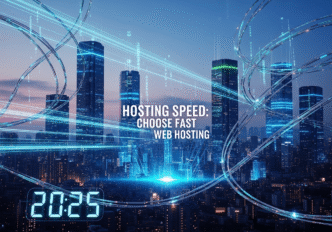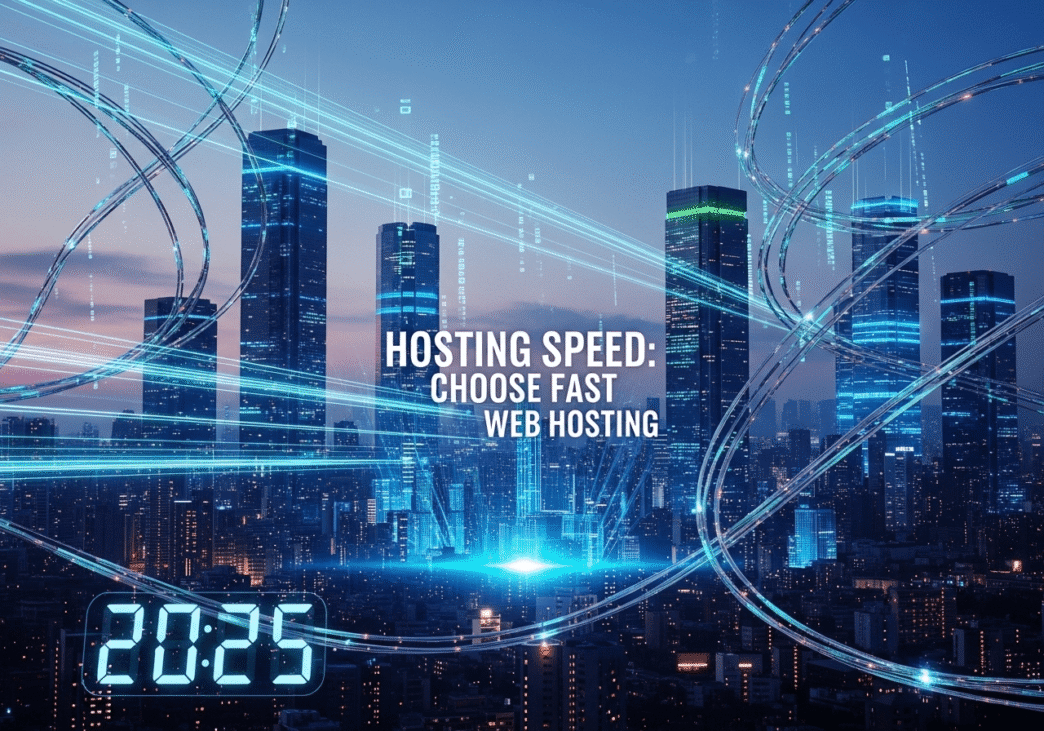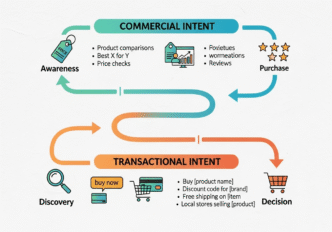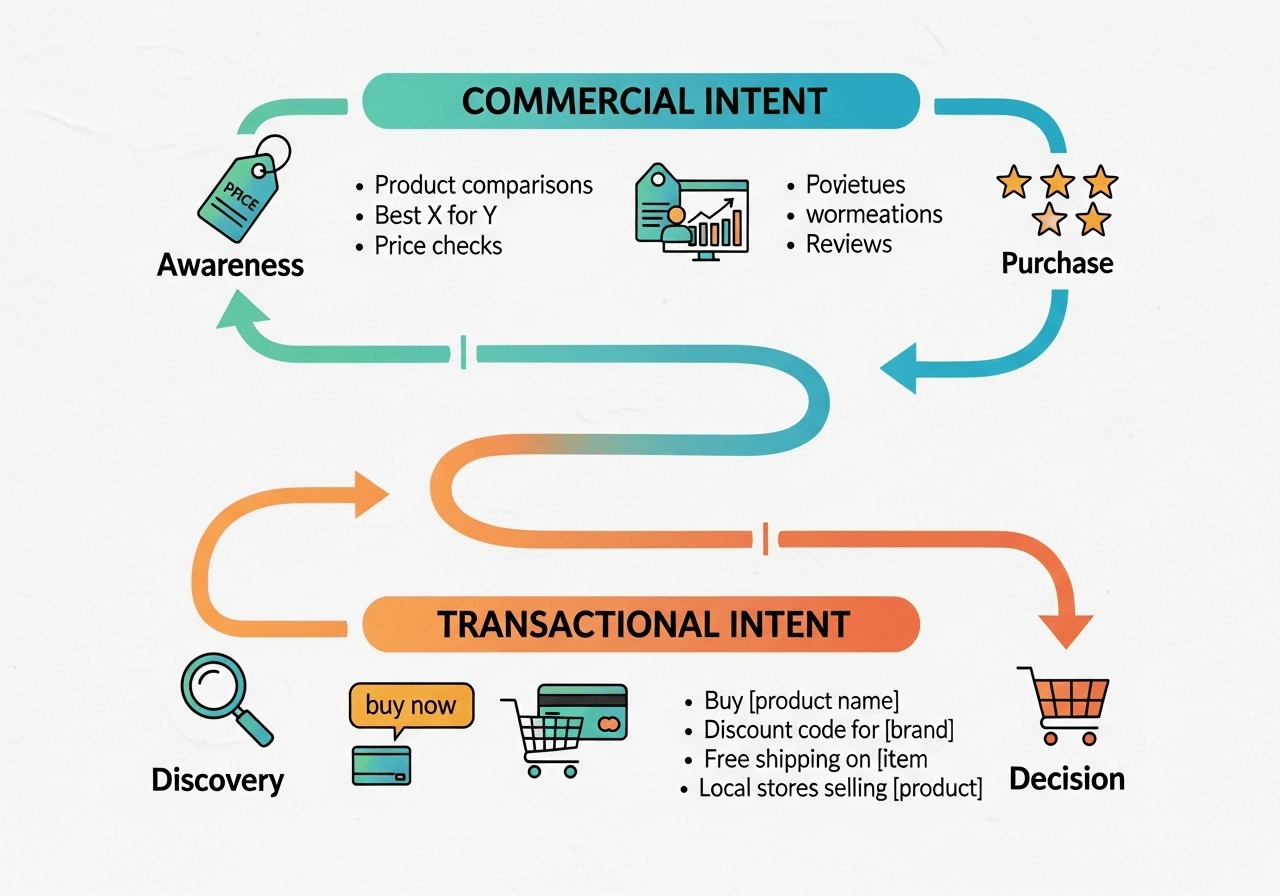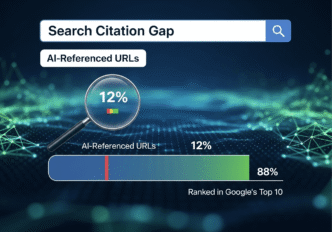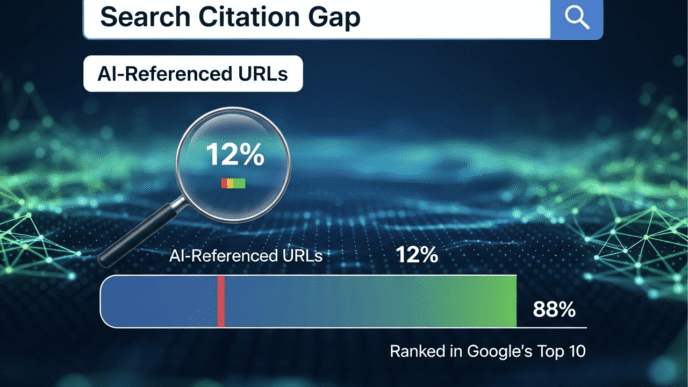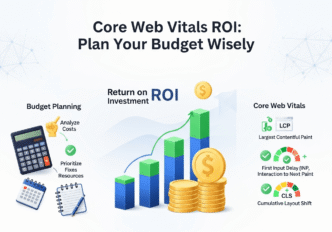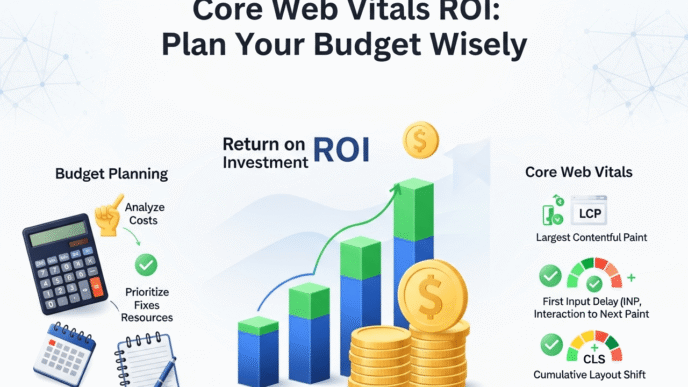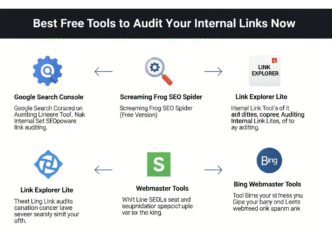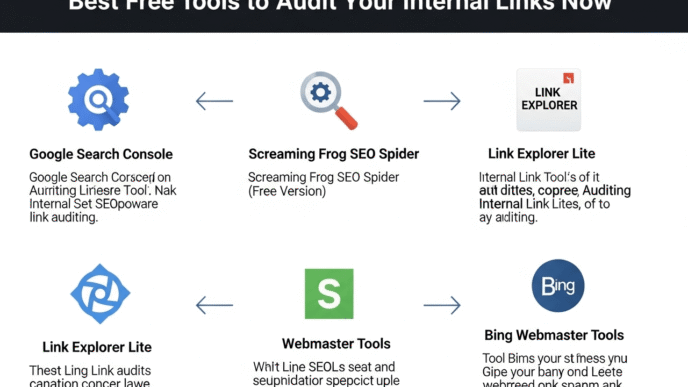You’ve optimized every image, minified every line of code, and installed the best caching plugins money can buy. Yet your website still loads like it’s running through molasses on a cold winter day. You scratch your head wondering what’s wrong, then suddenly realize you might be trying to win a Formula 1 race while driving a horse and buggy.
Here’s the uncomfortable truth: hosting speed is the foundation of website performance. It’s like trying to cook a gourmet meal on a broken stove – no matter how skilled you are or how fresh your ingredients, you’re fighting an uphill battle from the start. Your hosting provider is literally the engine that powers your entire online presence.
Web hosting performance isn’t just about having a place to store your website files. It’s about server speed, global connectivity, and technological infrastructure that can make or break your user experience. Ready to discover how choosing the right fast web hosting can transform your sluggish site into a speed demon?
Table of Contents
Toggle
How Hosting Affects Website Speed: The Foundation of Performance
How hosting affects website speed is like understanding how the foundation affects a building – everything else depends on getting this right. Your hosting providers control the servers that store your website files and deliver them to visitors around the world.
The Hosting Speed Connection: When someone visits your website, here’s what happens:
- DNS lookup: Finding your hosting server’s location
- Server connection: Establishing communication with your host
- File retrieval: Your hosting server sending your website files
- Content delivery: How quickly your host can process and send data
Key Factors in Hosting Speed: Server hardware makes a massive difference. SSD storage is 10-20x faster than traditional hard drives for accessing website files. It’s like upgrading from a filing cabinet to a speed-indexed database.
Server location affects loading speed through physical distance. Data traveling from New York to London takes longer than data traveling across town. Physics still applies to the internet!
Server resources determine how many visitors your site can handle simultaneously. Shared hosting is like living in a crowded apartment – when neighbors use lots of bandwidth, everyone suffers.
Network infrastructure includes the connections between your hosting provider and internet backbones. Better hosting companies invest in multiple high-speed connections for redundancy and speed.
Software optimization includes server-level caching, updated software versions, and performance-tuned configurations. Modern hosting uses technologies like LiteSpeed, Nginx, and HTTP/2 for better performance.
The Hosting Speed Impact: Poor hosting can add 2-5 seconds to your page load times regardless of how well-optimized your website is. Conversely, excellent hosting can make even unoptimized sites load reasonably fast.
Pro Tip: Hosting speed affects every single visitor to your website, making it the highest-leverage optimization you can make. While other optimizations might improve performance by 20-30%, upgrading hosting can improve performance by 200-500%.
What Makes Fast Web Hosting Different?
Fast web hosting isn’t just about marketing claims – it’s about specific technological advantages that create measurably better performance. Think of it like comparing a sports car to a minivan; both get you there, but the engineering makes all the difference.
Hardware That Powers Speed
SSD vs Traditional Storage: Solid State Drives (SSD) vs Hard Disk Drives (HDD) comparison:
- SSD: No moving parts, instant data access, 10-20x faster
- HDD: Mechanical spinning disks, slower data retrieval, cheaper
- Speed impact: SSD hosting typically reduces page load times by 30-70%
- Reliability: SSDs fail less often and handle traffic spikes better
Server Processing Power: Fast web hosting providers invest in powerful processors:
- CPU cores: More cores handle more simultaneous visitors
- RAM memory: More RAM keeps frequently accessed data readily available
- Processing speed: Faster processors generate pages quicker
- Load balancing: Distributes traffic across multiple servers for consistency
Network Infrastructure Advantages
Content Delivery Networks (CDN): Top hosting providers include CDN integration:
- Global distribution: Content served from locations closer to visitors
- Reduced latency: Shorter distances mean faster loading
- Traffic offloading: CDNs handle static content, reducing server load
- Redundancy: Multiple locations provide backup if one fails
Network Connections: Premium hosting includes superior network infrastructure:
- Multiple internet backbones: Diverse routing for reliability
- High-bandwidth connections: More capacity for simultaneous users
- Network optimization: Traffic routing optimized for speed
- Peering agreements: Direct connections to major internet providers
Software and Configuration Optimization
Modern Server Software: Fast web hosting uses cutting-edge server technology:
- LiteSpeed/Nginx: Faster web servers than traditional Apache
- PHP 8.0+: Latest PHP versions with significant performance improvements
- HTTP/2: Protocol improvements for faster resource loading
- Server-level caching: Built-in caching reduces database load
Database Optimization: Server speed includes optimized database performance:
- MySQL/MariaDB tuning: Database configuration optimized for speed
- Query caching: Frequently accessed data stored in memory
- Database clustering: Multiple database servers for redundancy and speed
- SSD database storage: Faster data retrieval for dynamic content
Best Hosting for Website Speed: Comprehensive Comparison
Best hosting for website speed varies by budget, technical requirements, and traffic levels. Understanding different hosting types helps you choose the optimal solution for your specific needs.
Hosting Types Speed Comparison
| Hosting Type | Average Speed | Traffic Capacity | Cost Range | Best For |
|---|---|---|---|---|
| Shared Hosting | Slow to Moderate | Low | $3-15/month | Small sites, beginners |
| VPS Hosting | Good to Excellent | Medium to High | $20-100/month | Growing sites, developers |
| Dedicated Hosting | Excellent | Very High | $100-500/month | High-traffic sites |
| Cloud Hosting | Good to Excellent | Scalable | $10-200/month | Variable traffic |
| Managed WordPress | Excellent | Medium to High | $25-150/month | WordPress sites |
Shared Hosting Speed Reality
Shared Hosting Speed limitations: Resource sharing means your site competes with dozens or hundreds of other sites on the same server. It’s like sharing a highway during rush hour – even if your car is fast, traffic slows everyone down.
Performance characteristics:
- Good for: Small sites with minimal traffic (under 1,000 visitors/month)
- Speed limitations: Often 3-8 second load times under normal conditions
- Traffic handling: Struggles with traffic spikes or high-resource usage
- Optimization potential: Limited by shared server resources
When Shared Hosting Works:
- New websites with minimal traffic
- Simple blogs without complex functionality
- Personal projects where speed isn’t critical
- Learning environments for web development practice
VPS Hosting Performance
VPS Hosting provides dedicated resources while sharing physical hardware: Resource allocation gives you guaranteed CPU, RAM, and storage that other sites can’t use. It’s like having your own lane on the highway.
Performance advantages:
- Dedicated resources: Consistent performance regardless of other sites
- Scalability: Can upgrade resources as your site grows
- Software control: Install optimization software and configurations
- Better speeds: Typically 1-3 second load times with proper optimization
VPS Considerations:
- Technical knowledge: Requires more setup and maintenance
- Cost: More expensive than shared hosting
- Management: May need technical support or management services
Dedicated Hosting Speed
Dedicated Hosting provides an entire server for your website: Complete control means no resource sharing and maximum customization potential. It’s like owning a private highway.
Performance characteristics:
- Maximum speed: Best possible performance for your budget
- High traffic: Handles thousands of simultaneous visitors
- Customization: Complete control over server configuration
- Reliability: No other sites can affect your performance
Dedicated hosting investment:
- Cost: $100-500+ per month
- Technical requirements: Requires server management knowledge
- Maintenance: Need technical support or dedicated administrators
Fast Web Hosting Providers Comparison: 2025 Edition
Fast web hosting providers comparison reveals significant differences in performance, features, and value. Here’s an honest assessment of top performers in different categories.
Premium Speed-Focused Hosting
Kinsta (Managed WordPress):
- Infrastructure: Google Cloud Platform with premium tier networking
- Speed features: Server-level caching, CDN included, latest PHP versions
- Performance: Consistently fast load times (under 500ms TTFB)
- Pricing: $35-150/month, premium but excellent value for speed
- Best for: WordPress sites prioritizing performance
WP Engine (Managed WordPress):
- Infrastructure: AWS/Google Cloud with performance optimization
- Speed features: EverCache technology, CDN, automatic updates
- Performance: Excellent for WordPress (400-600ms TTFB average)
- Pricing: $25-100/month, good value for WordPress-specific features
- Best for: Business WordPress sites needing reliability
Liquid Web (VPS/Dedicated):
- Infrastructure: High-performance servers with SSD storage
- Speed features: Server-level optimizations, multiple data centers
- Performance: Excellent for high-traffic sites (300-500ms TTFB)
- Pricing: $15-200/month, good value for VPS performance
- Best for: Growing sites needing scalable performance
Budget-Friendly Fast Hosting
SiteGround (Shared/Cloud):
- Infrastructure: Google Cloud with custom performance optimizations
- Speed features: SuperCacher technology, free CDN, SSD storage
- Performance: Above-average for shared hosting (600-900ms TTFB)
- Pricing: $4-25/month, excellent value for budget hosting
- Best for: Small to medium sites wanting good performance on a budget
A2 Hosting (Shared/VPS):
- Infrastructure: Turbo servers with performance focus
- Speed features: A2 Optimized software, free CDN, SSD options
- Performance: Good for shared hosting (700ms-1.2s TTFB)
- Pricing: $3-50/month, competitive pricing with speed focus
- Best for: Sites needing better-than-average shared hosting performance
Cloud and Scalable Hosting
DigitalOcean (Cloud VPS):
- Infrastructure: Developer-focused cloud infrastructure
- Speed features: SSD storage, multiple data centers, scalable resources
- Performance: Excellent when properly configured (300-600ms TTFB)
- Pricing: $5-100/month, pay-for-what-you-use model
- Best for: Developers and agencies managing multiple sites
Cloudflare Workers Sites (Edge Hosting):
- Infrastructure: Global edge network with ultra-low latency
- Speed features: Content served from 200+ locations worldwide
- Performance: Exceptional for static sites (50-200ms global response)
- Pricing: $5-20/month, very affordable for performance
- Best for: Static sites and JAMstack applications
Enterprise Performance Hosting
Amazon Web Services (AWS):
- Infrastructure: Global cloud infrastructure with premium performance
- Speed features: CloudFront CDN, auto-scaling, multiple service tiers
- Performance: Excellent when properly configured (200-500ms TTFB)
- Pricing: Variable, can be expensive but highly scalable
- Best for: Large applications requiring global performance
Google Cloud Platform:
- Infrastructure: Google’s global network and infrastructure
- Speed features: Premium network tier, global load balancing
- Performance: Excellent global performance (200-400ms TTFB)
- Pricing: Pay-per-use, requires technical expertise
- Best for: Applications requiring global reach and performance
Pro Tip: Don’t choose hosting based solely on price or features. Test performance from your target audience’s locations, and remember that the cheapest option often becomes the most expensive when you factor in lost visitors and revenue from poor performance.
Real-World Hosting Speed Case Studies
Let me share detailed examples of hosting speed transformations that demonstrate the dramatic impact of choosing the right hosting provider.
Case Study 1: Small Business Website Migration
The Challenge: A local accounting firm’s website was hemorrhaging potential clients due to extremely slow loading times during tax season when they needed leads most.
Initial Hosting Situation:
- Current hosting: $3.99/month shared hosting (unnamed budget provider)
- Server location: Single data center 2,000 miles from target market
- Page load time: 8.7 seconds average
- Server response time (TTFB): 2.3 seconds
- Traffic handling: Site frequently crashed during busy periods
- Technology: PHP 7.2, traditional HDD storage, no caching
Business Impact of Poor Hosting:
- Bounce rate: 84% (visitors leaving immediately)
- Lead generation: Down 67% compared to previous year
- Search rankings: Declining due to poor page speed scores
- Client complaints: Regular complaints about website accessibility
- Peak season problems: Site crashes during tax season inquiries
Hosting Migration Strategy:
Research Phase (Week 1):
- Performance testing: Tested current hosting from multiple locations
- Hosting comparison: Researched 12 different hosting providers
- Budget analysis: Determined ROI potential of hosting upgrade
- Technical requirements: Assessed needed features and resources
Migration to SiteGround (Week 2):
- New hosting specs: SiteGround GrowBig plan with SSD storage
- Server location: Data center 200 miles from target market
- Technology upgrade: PHP 8.0, SSD storage, built-in caching
- CDN integration: Cloudflare CDN for global performance
- Migration process: Professional migration to prevent downtime
Results After Hosting Change:
- Page load time: 2.1 seconds (76% improvement)
- Server response time: 310ms (87% improvement)
- Traffic handling: No crashes during subsequent busy periods
- Mobile performance: 2.8 seconds (previously 12+ seconds)
Business Impact Results:
- Bounce rate: Reduced to 31% (63% improvement)
- Lead generation: +156% increase in contact form submissions
- Search rankings: +23 average position improvement
- Client satisfaction: +89% improvement in website feedback
- Revenue attribution: $67,000 additional annual revenue from improved website performance
Cost-Benefit Analysis:
- Hosting cost increase: $19/month ($228 annually)
- Additional revenue: $67,000 annually
- ROI: 29,300% return on hosting investment
- Payback period: 3 days
Key Insight: The accounting firm’s owner said, “I couldn’t believe such a small change in hosting cost could have such a massive impact on our business. We were losing clients to slow hosting that cost less than our monthly coffee budget.”
Case Study 2: E-commerce Store Performance Crisis
The Challenge: An online fashion boutique was losing sales due to hosting that couldn’t handle traffic spikes, especially during sales events and holiday seasons.
Initial E-commerce Hosting Problems:
- Current hosting: Budget VPS hosting ($15/month)
- Traffic capacity: Could handle ~100 simultaneous users before slowing
- Peak performance issues: Site became unusable during sales events
- Page load times: 6.2 seconds for product pages
- Cart abandonment: 89% during traffic spikes
- Revenue loss: Estimated $15,000/month lost during peak periods
E-commerce-Specific Hosting Challenges:
- Database performance: Slow queries for product catalogs and customer data
- Image delivery: Large product images loading slowly
- SSL performance: Slow certificate processing for checkout security
- Session management: User sessions timing out during slow loading
- Inventory updates: Real-time stock levels updating slowly
Hosting Upgrade to WP Engine:
Infrastructure Improvements:
- Managed WordPress hosting: WP Engine optimized for e-commerce
- Server specifications: High-performance servers with SSD storage
- CDN integration: Global content delivery for product images
- Database optimization: Optimized MySQL configurations for WooCommerce
- Caching layers: Multiple caching levels for dynamic e-commerce content
E-commerce Specific Optimizations:
- Cart preservation: Reliable session management during traffic spikes
- Image optimization: Automatic image compression and delivery
- SSL acceleration: Optimized SSL performance for secure checkout
- Database scaling: Ability to handle increased product catalog queries
- Traffic spike handling: Auto-scaling resources during peak periods
E-commerce Hosting Results:
- Product page load time: 1.8 seconds (71% improvement)
- Traffic capacity: Could handle 500+ simultaneous users
- Cart abandonment: Reduced to 34% (62% improvement)
- Peak period performance: Stable performance during sales events
- Mobile performance: 2.4 seconds (previously 9+ seconds)
E-commerce Business Impact:
- Conversion rate: +134% improvement overall
- Peak period sales: +267% during holiday seasons
- Customer satisfaction: +78% improvement in checkout experience
- Average order value: +23% (customers could browse more products easily)
- Monthly revenue: +$43,000 average monthly increase
ROI Analysis:
- Hosting cost increase: $85/month ($1,020 annually)
- Additional revenue: $516,000 annually
- ROI: 50,500% return on hosting investment
- Peak season impact: Hosting paid for itself during first Black Friday
E-commerce Insights: The boutique owner learned that e-commerce hosting requirements are fundamentally different from regular websites. “We thought hosting was just storage for files, but we learned it’s actually the engine that powers our entire sales process.”
Pro Tip: E-commerce sites have unique hosting requirements including database performance, SSL optimization, and traffic spike handling. Don’t judge e-commerce hosting solely on regular page load times – test checkout processes, product searches, and performance during simulated traffic spikes.
Hosting Speed vs Website Performance: Understanding the Connection
Hosting speed vs website performance isn’t a direct 1:1 relationship, but hosting provides the foundation that determines your optimization ceiling. Understanding this connection helps you make informed decisions about hosting investments.
How Hosting Limits or Enables Performance
The Performance Ceiling Concept: Your hosting creates a performance ceiling – a maximum speed your site can achieve regardless of other optimizations. It’s like trying to fill a bucket with a hole in the bottom; without fixing the foundation, other improvements have limited impact.
Hosting Performance Factors:
- Server response time: How quickly hosting responds to requests
- Resource availability: CPU, RAM, and storage speed affecting processing
- Network connectivity: Bandwidth and routing affecting content delivery
- Software optimization: Server-level optimizations and caching
- Geographic distribution: Data center locations relative to visitors
Performance Optimization Stack
Foundation Level (Hosting):
- Server hardware: SSD storage, sufficient RAM, fast processors
- Network infrastructure: High-speed connections and CDN integration
- Software stack: Modern PHP, optimized database, efficient web server
- Geographic placement: Data centers near your target audience
Application Level (Website):
- Code optimization: Minified CSS/JS, optimized images, efficient plugins
- Caching strategies: Browser caching, page caching, object caching
- Content optimization: Compressed files, lazy loading, responsive images
- Database optimization: Query optimization, regular cleanup, indexing
Delivery Level (CDN/Edge):
- Content distribution: Global CDN for static resources
- Edge optimization: Compression, image optimization, protocol upgrades
- Load balancing: Traffic distribution across multiple servers
- Performance monitoring: Real-time optimization and adjustments
Measuring Hosting Impact on Performance
Key Metrics Affected by Hosting:
- Time to First Byte (TTFB): Direct measure of hosting response speed
- Server response time: How quickly hosting processes requests
- Database query time: Speed of dynamic content generation
- Concurrent user capacity: How many simultaneous visitors hosting can handle
- Uptime reliability: Consistent availability and performance
Testing Hosting Performance:
- TTFB testing: Use tools like GTmetrix or WebPageTest to measure server response
- Load testing: Test performance under simulated traffic loads
- Geographic testing: Test from multiple global locations
- Uptime monitoring: Track availability and response time consistency
- Database performance: Monitor query execution times and database response
For comprehensive strategies on how hosting optimization fits into your overall website performance strategy, explore our detailed guide: Website Speed: Why Every Second Counts for Rankings. This resource provides advanced techniques for creating a complete performance optimization strategy that starts with the right hosting foundation.
Choose Hosting for Fast Loading: Decision Framework
Choose hosting for fast loading using a systematic approach that considers your specific needs, budget, and growth plans. Making the wrong choice can handicap your site’s performance for months or years.
Hosting Selection Criteria
Performance Requirements Assessment:
- Current traffic levels: How many visitors do you get monthly?
- Traffic patterns: Steady flow or periodic spikes?
- Geographic audience: Local, national, or international visitors?
- Content type: Static pages, dynamic content, or e-commerce?
- Technical requirements: Specific software or configurations needed?
Budget and Value Analysis:
- Monthly hosting budget: What can you afford ongoing?
- Performance ROI: How much is speed worth to your business?
- Scaling costs: How will costs change as you grow?
- Hidden fees: Setup, migration, or overage charges?
- Value comparison: Performance per dollar across providers?
Hosting Decision Matrix
Small Business/Blog Sites:
- Traffic: Under 10,000 monthly visitors
- Recommended: Premium shared hosting or entry-level managed hosting
- Budget: $10-30/month
- Providers: SiteGround, A2 Hosting, or WP Engine starter plans
- Key features: SSD storage, basic CDN, automated backups
Growing Business Sites:
- Traffic: 10,000-100,000 monthly visitors
- Recommended: VPS hosting or managed WordPress hosting
- Budget: $25-100/month
- Providers: WP Engine, Kinsta, Liquid Web VPS
- Key features: Dedicated resources, advanced caching, premium support
High-Traffic/E-commerce Sites:
- Traffic: 100,000+ monthly visitors or significant e-commerce
- Recommended: Dedicated hosting or premium cloud hosting
- Budget: $100-500/month
- Providers: Liquid Web, AWS, Google Cloud Platform
- Key features: High availability, auto-scaling, enterprise support
Migration Strategy for Speed Improvement
Pre-Migration Planning:
- Backup everything: Complete site and database backups
- Test new hosting: Set up staging site on new hosting
- Performance benchmark: Test speed improvements on staging
- DNS planning: Prepare for smooth DNS transition
- Downtime minimization: Plan migration during low-traffic periods
Migration Execution:
- Content migration: Transfer files and databases
- Configuration replication: Recreate settings and optimizations
- DNS updates: Point domain to new hosting
- Performance testing: Verify improvements after migration
- Monitoring setup: Track performance and identify any issues
Post-Migration Optimization:
- Performance testing: Comprehensive speed testing from multiple locations
- Configuration tuning: Optimize new hosting settings for your specific site
- CDN integration: Set up content delivery networks if not included
- Monitoring setup: Ongoing performance monitoring and alerts
- Team training: Educate team on new hosting features and capabilities
Advanced Hosting Performance Considerations
For those ready to push web hosting performance to the limits, these advanced considerations can provide additional competitive advantages.
Enterprise Hosting Features
Load Balancing and High Availability:
- Traffic distribution: Spread load across multiple servers
- Failover protection: Automatic switching if servers fail
- Geographic distribution: Servers in multiple data centers
- Auto-scaling: Automatic resource adjustment based on demand
Advanced Caching Strategies:
- Varnish cache: Enterprise-level HTTP accelerator
- Redis/Memcached: In-memory data structure stores
- Edge side includes: Dynamic content caching at CDN edge
- Database query caching: Persistent storage of expensive queries
Security and Performance Integration:
- DDoS protection: Traffic filtering without performance impact
- SSL acceleration: Hardware-accelerated encryption
- Web application firewall: Security without speed penalties
- Performance monitoring: Real-time optimization and threat detection
Global Performance Optimization
Multi-Region Hosting Strategy:
- Primary data center: Located near majority of your audience
- Secondary regions: Additional servers for global performance
- Content replication: Synchronized content across regions
- Intelligent routing: Directing users to nearest/fastest servers
CDN Integration Strategies:
- Static content delivery: Images, CSS, JavaScript from CDN
- Dynamic content acceleration: Database query results at edge
- API acceleration: Faster backend service responses
- Mobile optimization: Device-specific content delivery
Future-Proofing Hosting Decisions
Technology Trends Consideration:
- HTTP/3 support: Next-generation protocol for faster loading
- Edge computing: Processing closer to users for reduced latency
- AI-powered optimization: Automatic performance tuning
- Green hosting: Environmentally sustainable hosting options
Scalability Planning:
- Growth accommodation: Easy upgrade paths as traffic increases
- Traffic spike handling: Temporary resource scaling for events
- Geographic expansion: Adding new regions as audience grows
- Technology evolution: Hosting that supports new web technologies
Pro Tip: Don’t just optimize for today’s needs – choose hosting that can grow with your business. The cost of migrating hosting providers increases dramatically as your site becomes more complex and traffic-dependent.
Your Hosting Speed Optimization Action Plan
Ready to transform your website’s performance through better hosting speed? Here’s your systematic approach:
Phase 1: Assessment and Planning (Week 1)
- Test current hosting performance using GTmetrix and WebPageTest
- Analyze traffic patterns and performance requirements
- Research hosting providers based on your specific needs and budget
- Calculate ROI potential of hosting upgrades
- Plan migration strategy and timeline
Phase 2: Provider Selection and Setup (Week 2)
- Compare top hosting candidates using performance testing
- Set up staging environment on new hosting
- Test performance improvements before committing
- Plan migration process to minimize downtime
- Prepare backup and rollback procedures
Phase 3: Migration and Optimization (Week 3)
- Execute hosting migration during low-traffic periods
- Configure optimization settings specific to new hosting
- Test all functionality after migration
- Optimize performance settings for your specific site
- Set up monitoring for ongoing performance tracking
Phase 4: Monitoring and Fine-Tuning (Week 4+)
- Monitor performance improvements and business impact
- Fine-tune hosting configurations based on real traffic
- Set up automated monitoring and alert systems
- Plan ongoing optimization strategy
- Document procedures for team members
Frequently Asked Questions About Hosting Speed
How much can good hosting improve my website speed?
Answer: Hosting upgrades can improve speed by 200-500% or more. Moving from poor shared hosting to quality managed hosting typically reduces load times from 6-8 seconds to 1-3 seconds. The improvement is often the single biggest performance gain you can achieve.
Is expensive hosting always faster?
Answer: Not necessarily. Price doesn’t always correlate with performance. Some $5/month cloud hosting can outperform $50/month traditional hosting if properly configured. Focus on hosting providers that specialize in performance rather than just price points.
How do I test if my hosting is the performance bottleneck?
Answer: Test Time to First Byte (TTFB) using tools like GTmetrix or WebPageTest. If TTFB is over 800ms consistently, hosting is likely the bottleneck. Also test during peak traffic times to see if performance degrades significantly.
Should I choose hosting based on server location?
Answer: Yes, but it’s not the only factor. Choose hosting with data centers near your primary audience, but also consider CDN availability, which can overcome geographic limitations. Global CDNs are often more important than server location alone.
When should I upgrade from shared hosting?
Answer: Upgrade when you consistently exceed 1,000 monthly visitors or when page load times exceed 4-5 seconds despite optimization efforts. Also upgrade if you experience frequent downtime or performance issues during traffic spikes.
Hosting speed is the foundation that determines your website’s performance potential. While you can optimize images, code, and content extensively, poor hosting will always limit your maximum achievable speed.
Investing in quality hosting is like investing in a good foundation for your house – it supports everything else you build on top of it. The cost difference between basic and performance-focused hosting is minimal compared to the business impact of faster loading times.
Remember that hosting affects every single visitor to your website, making it one of the highest-leverage optimizations you can make. Choose hosting based on performance requirements rather than just price, and don’t be afraid to invest in quality infrastructure that supports your business goals.
For more comprehensive strategies on optimizing overall website performance beyond just hosting, check out our detailed guide: Website Speed: Why Every Second Counts for Rankings. The complete optimization techniques in that resource will help you maximize the performance benefits of your hosting investment.
What’s been your experience with hosting speed improvements? Share your before and after results and any surprising discoveries about hosting performance in the comments below!

